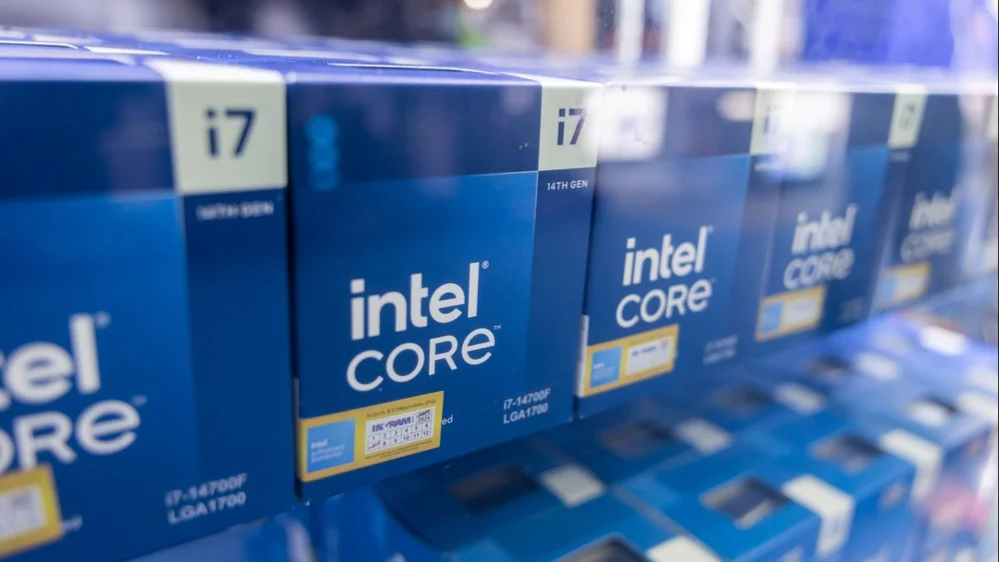Intel's revenue forecast beat expectations. Why did its stock fall?
The new CEO still has work to do to improve the company's competitiveness

PC microprocessor maker Intel gave a stronger-than-expected revenue outlook for the current quarter on Wall Street. However, the profit forecast turned out to be less optimistic - the company expects only to break even. The forecast worried investors: Intel shares fell in extended trading. This year, the company's quotes are significantly behind competitors like AMD and Nvidia;
Details
Chipmaker Intel will report third-quarter revenue of $12.6 billion to $13.6 billion, the company said in a statement. Analysts' consensus forecast was closer to the lower end of that range, noted Bloomberg. Intel predicts demand for PC and laptop processors to rise because of President Donald Trump's duties, with PC makers building up inventories before new levies are imposed.
On earnings per share, the outlook disappointed, with the company only expecting to go to zero in the third quarter, while analysts had anticipated earnings of $0.04 per share, wrote Bloomberg.
The chipmaker missed Wall Street's earnings expectations for the second quarter, reporting a loss of $0.1 per share. According to the agency, analysts had forecast adjusted earnings of $0.01 per share. However, revenue did beat Wall Street's expectations: $12.86 billion versus LSEG's projected $11.92 billion, wrote CNBC.
In the second quarter, Intel's net loss widened 80% year-over-year to $2.9 billion, or $0.67 per share. The company explained that the EPS numbers were not comparable to analysts' expectations due to a one-time $800 million amortization adjustment related to "redundant non-reusable equipment." That adjustment reduced the final EPS by about 20 cents, CNBC noted.
What about the stock
Last week, Citi noted that Intel "remains the most popular short position" among investors surveyed by analysts. At the same time, the bank warned against shorting the chipmaker's shares, expecting their growth after the publication of the reports.
Intel securities jumped 2% in the July 24 postmarket, which led to the liquidation of short positions, and then collapsed 4.2% to Thursday's closing price of $21.7 in major trading.
Has the company solved all the problems?
Intel is still facing serious challenges, Bloomberg writes. The chipmaker is losing market share to competitors and is struggling to attract customers to its Foundry division, which deals with contract chips. In addition, Intel's portfolio lacks solutions that can meet the booming demand for chips for AI systems. Therefore, since the beginning of the year, Intel's shares have grown by only 13%, lagging behind its competitors: AMD's securities have grown by 34%, and Nvidia's - by 29%.
Intel's new CEO Lip-Bu Tan is working to cut costs and put engineering culture back at the core of Intel's business. As part of that strategy, the company has made cuts and suspended a massive factory construction program. By the end of the year, however, Intel expects to be laying off employees again and bringing its headcount to 75,000 - down more than 20 percent from the end of June, Bloomberg writes.
In a report Thursday, Intel said it had completely abandoned previously frozen projects in Germany and Poland, and slowed construction of a new facility in Ohio.
Analysts are concerned that the surge in PC demand in the current quarter is unlikely to continue into the first half of next year. The company needs to look for new drivers for growth.
Intel has previously said it intends to cut operating expenses to $17 billion in 2025 and $16 billion in 2026. On Thursday, the company confirmed that it remains on course to reduce costs.
Change of strategy
Former Intel CEO Pat Gelsinger was betting on a massive expansion of its network of fabs. But the chipmaker lost demand for some of its PC chips as Apple switched to its own processors and Microsoft recommended that manufacturers use Qualcomm's more power-efficient processors in the new Copilot+ standard. Intel's Gaudi chips for AI never became popular with major customers. On Thursday, the company once again said it was not ready to introduce new AI chips and was focusing on niches where competition is lower.
"The underlying market trend isn't going away. Global demand for AI chips continues to grow, and Intel needs to take its place in that value chain," Emarketer analyst Jacob Bourne told Bloomberg.
New CEO Lip-Bu Tan said in a memo to employees, "We will take a fundamentally different stance in developing the Foundry business. In recent years, Intel has invested too much and too soon - without sufficient demand. As a result, our manufacturing network has become fragmented and underutilized. We have a responsibility to change course."
So far, the bulk of orders to Intel's factories come from internal divisions. Some of the company's best products today include components manufactured at TSMC facilities, which further pressures Intel's margins, Bloomberg notes.
This article was AI-translated and verified by a human editor
